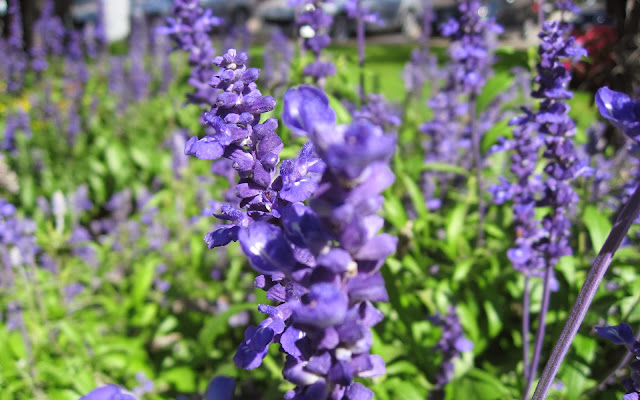Lavandula
(common name Lavender) is a genus of 39 species of flowering plants in the mint
family, Lamiaceae. It is native to the Old World and is found from Cape Verde
and the Canary Islands, southern Europe across to northern and eastern Africa,
the Mediterranean, southwest Asia to southeast India. Many members of the genus
are cultivated extensively in temperate climates as ornamental plants for
garden and landscape use, for use asculinary herbs, and also commercially for
the extraction of essential oils. The most widely cultivated species, Lavandula
angustifolia is often referred to as lavender, and there is a colour named for
the shade of the flowers of this species.
Description
The
genus includes annual or short-lived herbaceous perennial plants, and
suffrutescent perennials, subshrubs or small shrubs.
Leaf
shape is diverse across the genus. They are simple in some commonly cultivated
species; in others they are pinnately toothed, or pinnate, sometimes multiple
pinnate and dissected. In most species the leaves are covered in fine hairs or
indumentum, which normally contain the essential oils.
Flowers
are borne in whorls, held on spikes rising above the foliage, the spikes being
branched in some species. Some species produce coloured bracts at the apices.
The flowers may be blue, violet or lilac in the wild species, occasionally
blackish purple or yellowish. The calyx is tubular. The corolla is also tubular,
usually with five lobes (the upper lip often cleft, and the lower lip has two
clefts).


.jpg)
.jpg)





0 comments:
Post a Comment